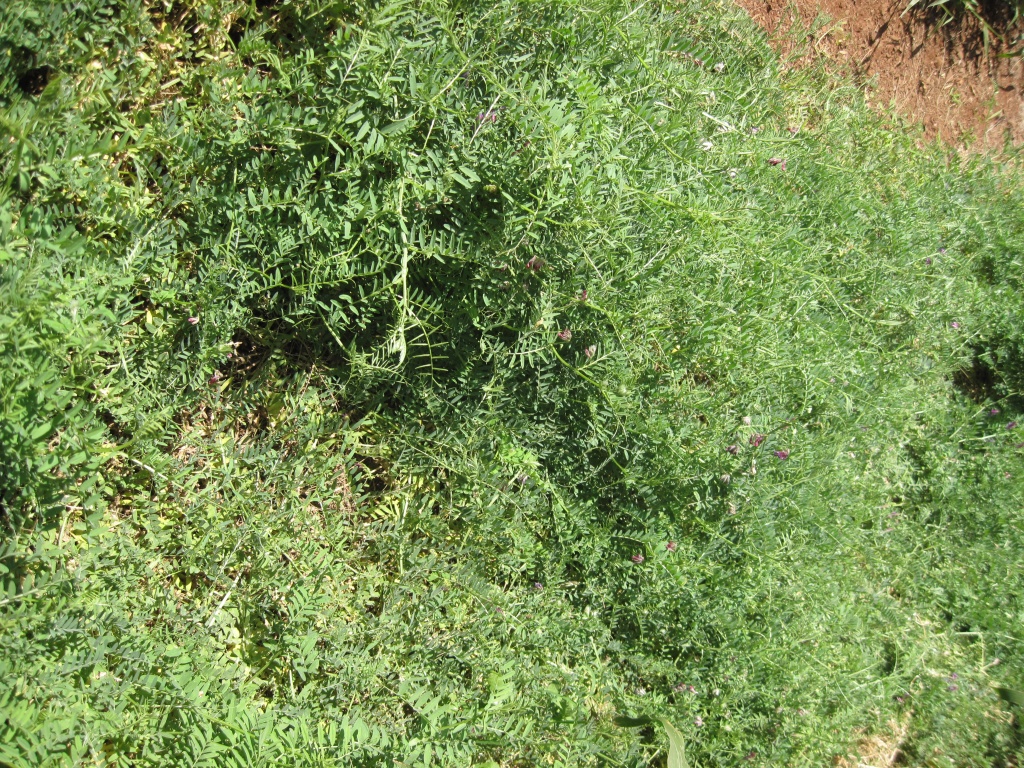Farmers have been encouraged to plant hairy vetch not just for livestock consumption but also for a number of purposes that include nitrogen fixation into the soil, weed suppression, soil erosion prevention, building of soil organic matter among others.
This vine-like, vigorously-growing, cold-tolerant, winter-hardy, annual legume has been found by many experts to be very beneficial to farmers who might not have enough money to buy synthetic nitrogen or expensive organic nitrogen inputs to help boost soil fertility and improve yields.
“Instead of using much money on nitrogen rich synthetic and organic fertilisers, farmers can consider growing hairy vetch for fodder and as a nitrogen fixer among other benefits as it can be intercropped by a wide range of crops,” said Mr. Peter Mutuva, livestock production officer, Nairobi County Government Livestock Department.
READ ALSO: Fodder offers alternatives to rising cost of commercial feeds
On fields where hairy vetch is to be planted, lime should be applied as needed to bring the soil pH within the range of 5.8 to 6.5. About planting time, phosphorus and potassium should be applied according to soil test recommendations. Where the crop is harvested as hay or silage, practically all of the nutrients added in the fall will be available for use by subsequent crops planted behind the vetch.
As fodder
Hairy vetch can provide spring pasture for livestock. In other cases, livestock producers plant it with winter annual grasses, especially small grains. They then harvest the forage for hay or silage.
About 3.5 percent of the dry matter of hairy vetch is nitrogen, therefore a substantial amount of nitrogen is available in forage.
Hairy vetches should not be grazed until at least six inches of growth has accumulated. Grazing animals should be removed from the pasture during extremely muddy periods, especially when the plants are small. If it is to be used for hay or silage, hairy vetch should be cut in the early bloom stage.
READ ALSO: Yellow maize could be the promised solution for Kenya's fodder woes
As nitrogen fixer
Hairy vetch can fix large amounts of nitrogen that are released rapidly after it has been terminated. Decomposition and nitrogen release rates are faster if the vetch is incorporated, but total amount of nitrogen released over the entire growing season is similar to vetch left on the surface as a mulch. Typically, hairy vetch contains 3.5 to 4 percent nitrogen (dry matter basis). Conservative estimates are that 50 percent of this will be available to the following crop.
As soil and moisture preserver
Hairy vetch makes heavy growth during long rainy season that chokes out competitive weeds that may affect other crops intercropped with the vetch. It is easily killed by desiccants at planting time and it provides a good mulch for conserving soil moisture and preventing soil erosion. Yet, it deteriorates quickly enough so that it does not create problems later in the growing season.
READ ALSO: New Farmpro fodder doubles milk
Research has shown that hairy vetch mulch can increase main crop disease resistance and prolong leaf photosynthesis of the following crop due to purple colours that attract pollinators.
Finally, hairy vetch require little management once it is established. Fertilizer is usually not needed, and nitrogen fertilizer or manure applications can be detrimental because they stimulate grasses and small grains to be more competitive.

















Comments powered by CComment